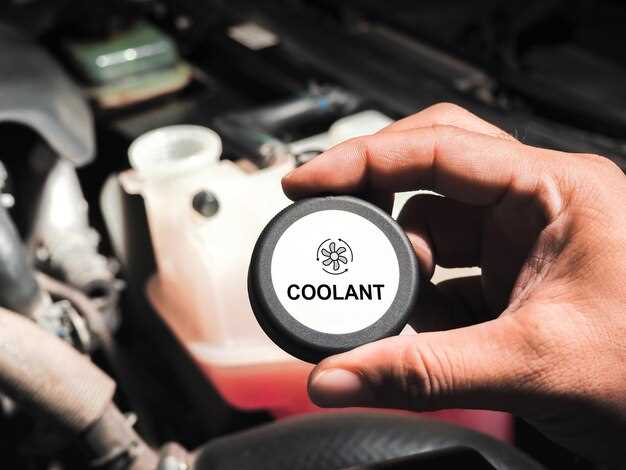
In the intricate world of machinery and automotive technology, maintaining the optimal temperature is crucial for performance and longevity. Coolants play a vital role in regulating the temperature of engines and various equipment, ensuring they operate efficiently without overheating. The market is flooded with different types of coolants, each designed for specific applications and conditions.
When selecting a coolant, it is imperative to understand the specific requirements of your engine or system, as well as the temperature ranges it will be exposed to. Factors such as the materials used in your machinery, the environmental conditions, and the presence of any additives can significantly impact coolant performance. Choosing the right type can prevent serious issues like corrosion, freezing, or boiling over, which can lead to costly repairs and downtime.
This article will guide you through the process of selecting the appropriate coolant by discussing various types, their properties, and what factors to consider based on your unique needs. Whether you are maintaining a vehicle, industrial equipment, or any other system where temperature regulation is essential, understanding your options will empower you to make informed decisions.
Understanding Antifreeze Variants for Different Climates
Choosing the right antifreeze is crucial for optimal vehicle performance, especially when considering varying climate conditions. Antifreeze serves as a coolant that not only regulates engine temperature but also prevents the liquid from freezing in colder environments.
In regions with extremely low temperatures, such as northern climates, a high concentration of ethylene glycol antifreeze is recommended. This variant remains liquid at lower temperatures, protecting the engine from freezing and potential damage. It is essential to check the manufacturer’s recommendations to ensure the freeze point is suitable for your typical winter conditions.
Conversely, in warmer climates, a different type of antifreeze may be more beneficial. Propylene glycol-based coolants are often favored in hotter areas because they can offer better heat transfer properties. These coolants generally have a higher boiling point, which is essential for maintaining engine temperature during hot weather. Additionally, they are safer for the environment and for animals in case of spillage.
Hybrid coolants, which combine both ethylene and propylene glycol, provide versatility for users in regions experiencing temperature fluctuations. These coolants can be adjusted in concentration to provide adequate protection against both extreme cold and heat, making them suitable for climates with variable weather patterns.
When selecting an antifreeze, it is important to consider not only the average temperatures experienced throughout the year but also any specific conditions that might arise, such as sudden cold snaps or heatwaves. Regularly checking the coolant’s condition and composition, as well as adhering to maintenance schedules, will further enhance engine protection and longevity.
Key Temperature Ranges for Optimal Coolant Performance

Choosing the right coolant for your system involves understanding the key temperature ranges that affect performance. Coolants must operate effectively across a certain temperature spectrum to ensure optimal functioning of mechanical systems. Each type of coolant is formulated to handle specific thermal conditions, making it essential to align coolant selection with application requirements.
Generally, coolants can be categorized based on their freezing points and boiling points. For instance, ethylene glycol-based coolants offer effective performance in a temperature range of -30°F to 250°F (-34°C to 121°C), making them ideal for automotive applications. On the other hand, propylene glycol coolants provide a safer alternative with similar thermal properties but typically operate efficiently from 0°F to 265°F (-18°C to 129°C).
In industrial applications, coolants may be subjected to more extreme temperatures. Water-based coolants can sustain temperatures up to 212°F (100°C), but additives such as surfactants and inhibitors are needed to enhance performance. For high-temperature environments, specialized synthetic coolants are designed to perform in ranges exceeding 300°F (149°C), suitable for heavy machinery or high-performance engines where overheating can lead to critical failures.
Aside from just temperature limits, the viscosity of coolants at various temperatures also affects system efficiency. Low-viscosity coolants are preferred in colder conditions to facilitate better flow, whereas higher viscosity is acceptable in warmer scenarios to enhance lubrication and heat transfer.
Understanding these temperature ranges is crucial for optimizing coolant selection, ensuring reliability and longevity in any application. Always consult manufacturer specifications for the coolant type best suited to your system’s operational temperature to maintain peak performance and prevent breakdowns.
Compatibility of Coolants with Engine Materials and Fluids

Choosing the right coolant for your engine involves understanding its compatibility with various materials and fluids used in engine construction. Different coolant types can react differently with metals, rubber, and plastics, making it essential to consider these interactions to prevent damage and ensure optimal performance.
Most modern engines utilize materials like aluminum, cast iron, and various alloys. Ethylene glycol-based coolants are generally safe for these materials; however, prolonged exposure can lead to corrosion if not properly formulated. In contrast, propylene glycol coolants are often considered less harmful to metals and can be a safer alternative, especially in applications where leakage could pose health risks.
Another critical factor is the compatibility of coolants with seals and gaskets, typically made from rubber or other synthetic materials. Certain coolants can deteriorate these components, leading to leaks and system failures. For instance, traditional green coolants may be harsh on some rubber compounds, while newer formulations often include additives designed to protect these materials.
Additionally, the temperature range of operation determines coolant effectiveness. Coolants have specific boiling and freezing points that must align with the engine’s expected operating temperatures. Using a coolant that is not suitable for the temperature conditions can lead to overheating or freezing, both of which may harm the engine significantly.
Lastly, it’s crucial to consider the existing fluids in the cooling system. Mixing different types of coolants can lead to chemical reactions that form sludge or precipitates, which can block coolant passages. Therefore, thorough flushing of the system is recommended before introducing a new coolant type to maintain optimal compatibility and performance.




